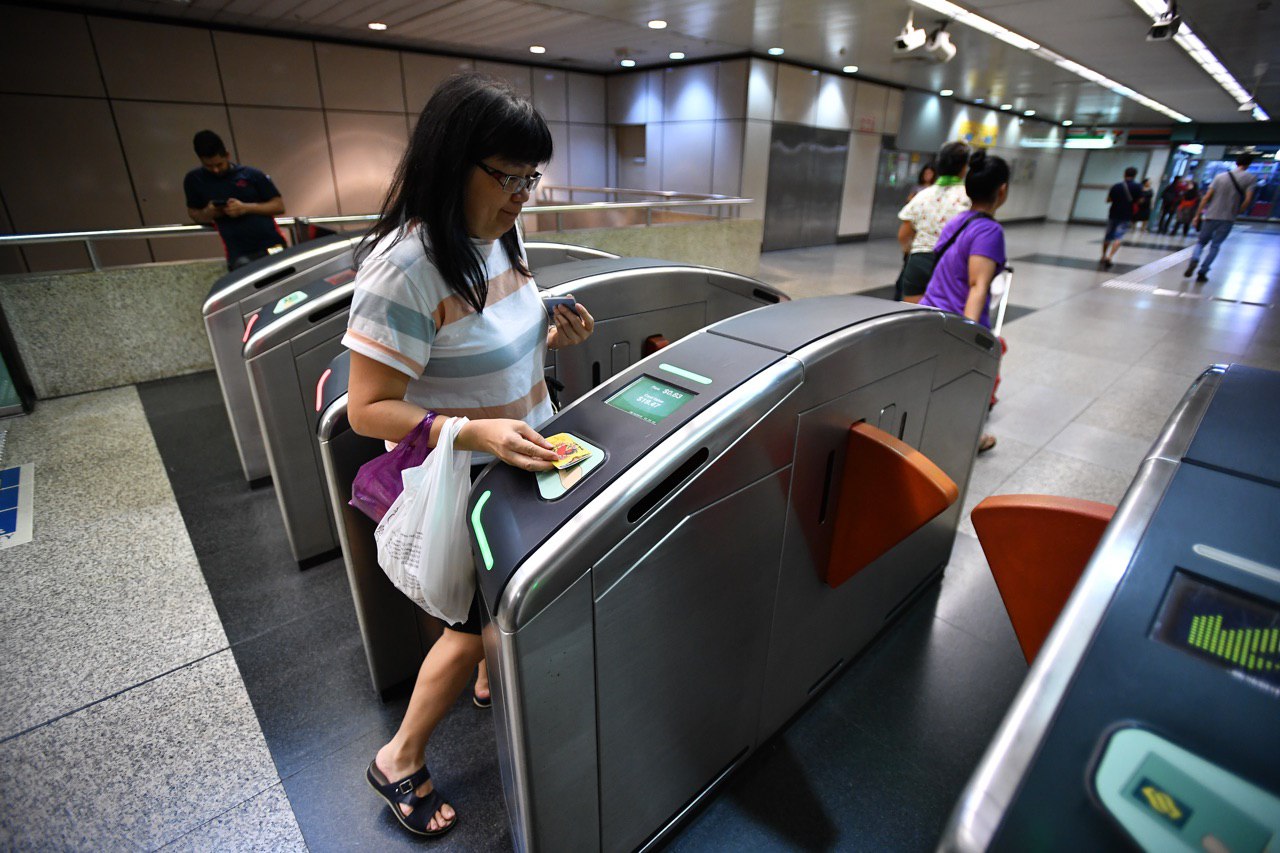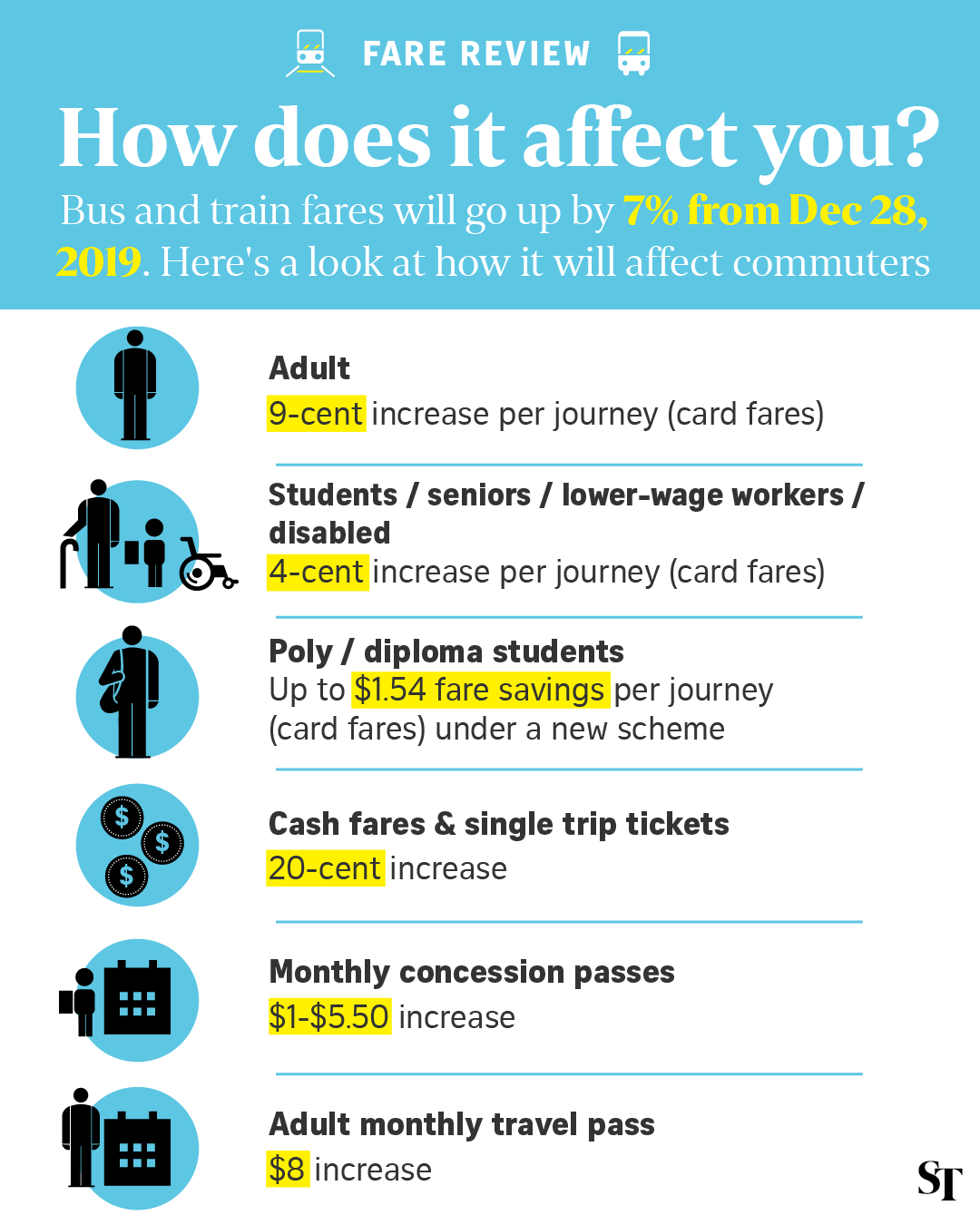Bus, train fares to rise by 7% from Dec 28; hike capped at 4 cents per trip for 1 in 2 Singaporeans
Sign up now: Get ST's newsletters delivered to your inbox

Adult card fares will rise by nine cents per trip. Senior citizens, low-wage workers, persons with disabilities and students will see the smallest increase of four cents.
ST PHOTO: LIM YAOHUI
Follow topic:
SINGAPORE - Bus and train fares will rise by 7 per cent from Dec 28, although the hike will be cushioned for more than one in two Singaporeans, who enjoy concessionary fares.
For the first time, this group will include polytechnic students, who will enjoy student concessions.
The hike is the maximum allowed in this year's formula, and the biggest percentage jump since 1998 - driven largely by a spike in fuel and energy costs.
Adult card fares will rise by nine cents per trip.
In its annual revision announcement on Tuesday (Oct 8), the Public Transport Council (PTC) said senior citizens, low-wage workers, persons with disabilities and students will see the smallest increase of four cents.
On the other hand, those who pay by cash or buy single-trip tickets - mostly visitors or infrequent users - will pay 20 cents more per trip, believed to be the single biggest increase so far.
The majority who use adult ez-link cards - accounting for nearly two-thirds of all trips - will see each ride costing nine cents more. Those who buy monthly concession passes will fork out $1 to $5.50 more, while frequent users who buy adult monthly passes will incur $8 more per month.
Polytechnic students will, however, see their commuting cost fall. After many years of lobbying, polytechnic students have now seen student concessions extended to them, allowing them to save up to $1.54 per trip.

In total, PTC chairman Richard Magnus pointed out that "close to two million people, or more than one in two Singaporeans, enjoy concessionary fares on our public transport system".
He said this was 35.4 per cent more than in 2013, when the Fare Review Mechanism Committee undertook a comprehensive review of the concession schemes.
Actual average travelling cost has also fallen because of better rail connectivity. For instance, a ride from Bukit Panjang to Bugis cost $1.93 in 2015 because of several transfers. But today, with the Downtown Line, the same trip will cost $1.72 from Dec 28.
Transport Minister Khaw Boon Wan said in a Facebook post on Tuesday that in any fare adjustment, the Government tries to keep the increase as low as possible so that it affects as few people as it can.
"Fortunately, more than half of Singaporeans receive substantial discounts from the normal fare of up to 70 per cent. This includes students, senior commuters and Workfare recipients," wrote Mr Khaw.
The PTC's move to cap the fare increase to not more than 4 cents for these concession groups protects the interest of about two million commuters, he added, noting that this means that, on average, fares are not higher than 2015 levels.
The Ministry of Transport will also step in to help lower-income families.
Mr Khaw said that this year, the Goverment will extend 50 per cent more Public Transport Vouchers and increase the value of each voucher to $50, up from $30.
This extra assistance would then cover one in five resident households, up from the previous one in 10 households, he said.
The 7 per cent fare increase translates to a rise of about $132.5 million in total fare revenue. Of this, SBS Transit will get $18.8 million, while SMRT Trains will get $40.2 million. Both are for train rides. SBST and SMRT will contribute about $1.88 million and $2.01 million respectively to the Public Transport Fund, which is used to help needy families cope with fare rises.
The remaining $73.5 million in fare increase will go to the Land Transport Authority, which administers bus contracts. These contracts are up for periodic competitive tenders, and the winning operator is paid a fixed amount for a parcel of routes. All fare revenue then goes to the LTA.
Mr Magnus cited the long-term sustainability of the public transport system as a concern. "Running a reliable public transport system is costly, and we have to strive towards a more sustainable financing model," he said.
He noted that this was not unique to Singapore. Citing research by the International Association of Public Transport, he said there was a widening gap between revenue and cost for providing public transport services in other cities, mainly because of higher costs of labour and energy.
"While Singapore has been able to address this through our transparent fare adjustment formula, we will need to watch over the long-term consequences of such a trend on our overall public transport sustainability," he noted.


